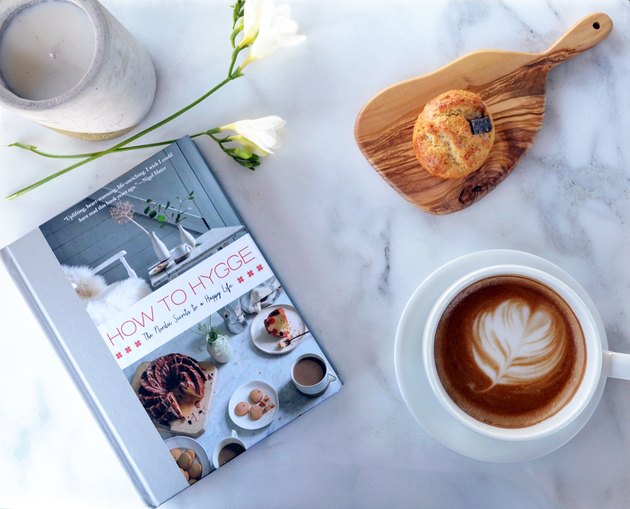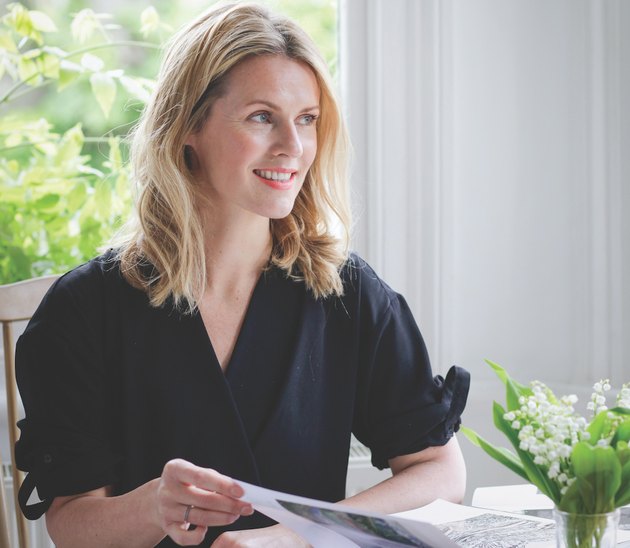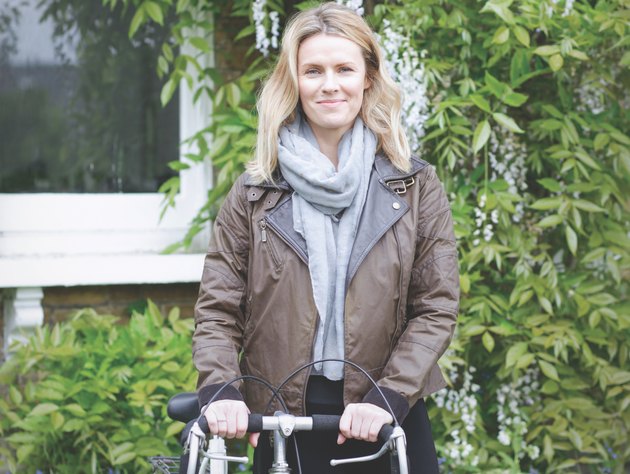In the United States, the start of the new year is all about setting goals, kicking our own asses back into gear, pushing hard at work all the while attempting a diet and exercise overhaul. Even though the days are cold and the nights are long, we tend to be pretty hard on ourselves this time of year. But things look a lot different in Norway, and the rest of the world is starting to catch on.

Advertisements
Imagine candlelit store windows, the smell of freshly baked goods and long dinners with friends. People there are practicing hygge (pronounced “hoo-ga”), which can be approximately translated into English as “coziness.” Unlike Americans, the Danes use winter for kinship, conviviality and comfort.
To kick off the LIVESTRONG.COM Healthy Reads Book Club, this month we are reviewing “How to Hygge: The Nordic Secrets to a Happy Life.” Join us in reading this gorgeous new book, and, at the end of the month, everyone in the book club will have a chance ask the author questions. Be sure to sign up to the Healthy Reads Book Club on Goodreads.com to be a part of the discussion and get the latest updates on author chats and the next book!

In “How to Hygge: The Nordic Secrets to a Happy Life," Norwegian-American author, blogger and cook Signe Johansen teaches readers how to embrace themselves and their loved ones during the toughest months of the year. She draws from her experiences growing up in Oslo, Norway’s capital city, to craft her fully illustrated guide on living, eating and designing in the Danish way.
We caught up with the London-based author to learn more about her creative process, her inspirations and, of course, hygge.
On Writing “How to Hygge”
I grew up in Norway, so it was kind of part of my upbringing, but I was interested to see why it was that, by every objectively measurable standard, the Scandinavian region would always score particularly well. My background is in anthropology, so I was particularly interested in the context of how people live.
I didn’t want [“How to Hygge”] to feel like an earnest, academic book at all. I wanted it to be a kind of breezy, lifestyle guide to how people live. I wanted to make it accessible because I genuinely think that it’s something that everyone can, in some way, adopt into their lives. It’s a good antidote to a lot of the craziness going on in the world.
My thinking back then was that people are quite stressed, especially in the U.K. — and I think in the States as well. There’s this huge competitive pressure to achieve. I saw people getting stressed about things that don’t matter, things that are ephemeral achievements.
But when I grew up in Norway, people just didn’t care about things like that. So I was really interested in writing an antidote to that way of life and to say, “Look, there’s more meaning to life than just accruing material objects and having a nice car and earning lots of money. There’s actually a simple way of living.”
So in many ways the ethos behind the book was a sort of back-to-basics guide on how to simplify your life. It didn’t have anything to do with politics or the state of the world.
Of course, now, because of the turbulence and the discombobulation that people feel, the book becomes quite timely. Most people don’t have a lot of control over world events and the political situation at the moment, so this is just a way of saying, “Look, we still need to look after ourselves, and we still need to have a sense of safety and comfort,” and hygge really is about that.
Sponsored Links
On Food
Until very recently in human history, we didn’t have supermarkets, we didn’t have access to certain foods every day of the year and foods from out of season, so we had to make the most of limited resources. And I think what’s interesting now is the science behind it, showing that there’s a lot of health benefits to making our own preserves: pickling, fermenting and curing. It’s now known that all those probiotics are incredibly good for us. It’s kind of funny how these things go. The pendulum swings back and forth.

Sponsored Links
How to Hygge in the City
Anthropologists talk about agency and exercising agency and being a social agent. You have to go make the decision to be active or to have a hygge life or to live well or to have a beautiful home or cook your own dinner. No one’s going to force you to do that. So you have to ditch your mindset and say, “OK, I’m not going to kind of wither and die in a state of depression. I’m going to actually go out and do something about it.”
It’s much harder, I think, to do that in a city because you are constantly surrounded by people and a lot of energy and adrenaline and aggression, so you have to create a little bubble around you — a sort of protective sphere of nourishment and restorative acts that will make you feel sane.
I think ultimately you have to ask yourself what is being sold to you here? So much of the health and fitness industry is about selling you something. It’s about selling you a product or regimen or a quick-fix diet or the latest supplements. But I think as a social agent, as a consumer, as a citizen, you have a choice. You have a choice not to get swept up by all of that and say actually there’s a better way to live.
You have to create boundaries, and you have to say what’s important to you. For me, for example, cooking meals from scratch, having a good time, getting outdoors, being active, reading, educating myself — these are important things that are going to sustain me throughout my life, it’s not just a quick-fix solution. Stop wanting simple solutions to complex problems and look at it in a more sustainable way.
On Hopes
It’s small changes that you can make on a day-to-day basis. That’s the most meaningful thing that we all can do, whether it’s the Scandinavian hygge or anything else that we do in our lives.
It’s also important to nurture ourselves. The words that keep cropping up at the moment in 2017 are things like “resilience” and “self-care” and “restoration.” Being able to restore yourself is really, really important.
There are so many things that are out of our control, but on a day-to-day basis there are certain decisions that we can make. And not just to do with hygge. It’s almost like we’ve been awakened from a slumber. We’ve all suddenly looked around and gone, “What’s happening?” And maybe that’s something that was needed. And maybe that won’t end up in catastrophe, but I do sometimes think that we need to get shocked out of our complacency.
I’m not a soothsayer, so I can’t predict what’s going to happen in the future. But if people look after themselves and feel nurtured and have cozier interiors as a result of reading the book, then my job is done.
For More, Join LIVESTRONG.COM’s Book Club
LIVESTRONG.COM is kicking off our interactive Healthy Reads book club with a unique take on wellness that’s sure to be the new “French living.” Join our Goodreads group for discussion, reading guides and giveaways. Later this month we’ll be hosting a Twitter Chat with Johansen so that you can chime in with questions and topics for discussion.
Each month we’ll be selecting a new book about fitness, health and wellness to read and share. Get a preview of “How to Hygge: The Nordic Secrets to a Happy Life” and purchase your own copy on Amazon.
About Signe Johansen
Signe Johansen is a writer and cook who grew up in Norway. After graduating from the University of Cambridge, she trained at Leiths School of Food and Wine in London, worked in several top restaurants in the U.K., and then completed a master’s degree at the University of London. The author of the critically acclaimed “Scandilicious” cookbooks and contributor to a dozen other books on food and restaurants, her recipes have appeared in The Times, Sunday Times and Marie Claire. Johansen lives in London.



Comments